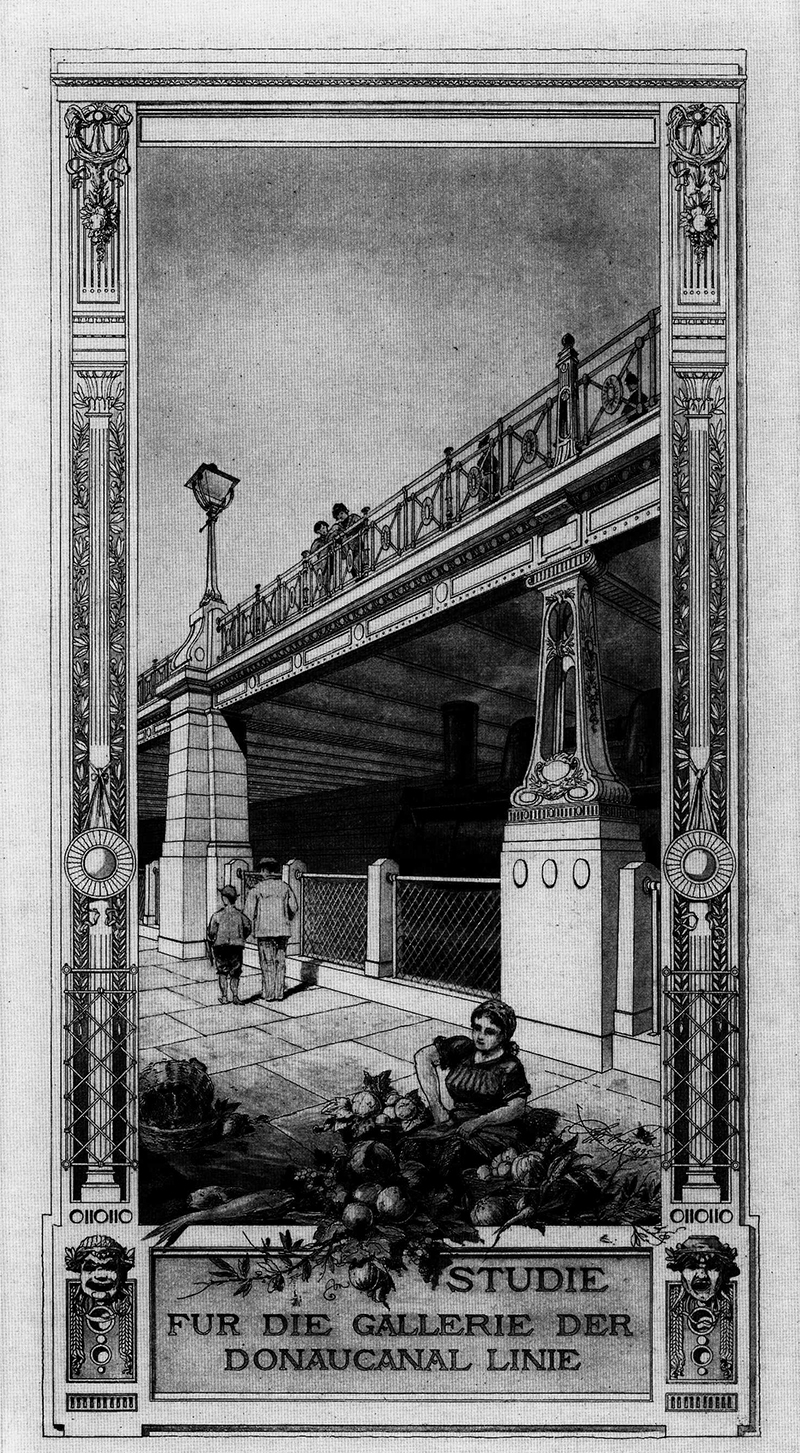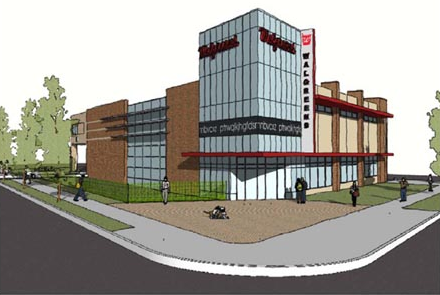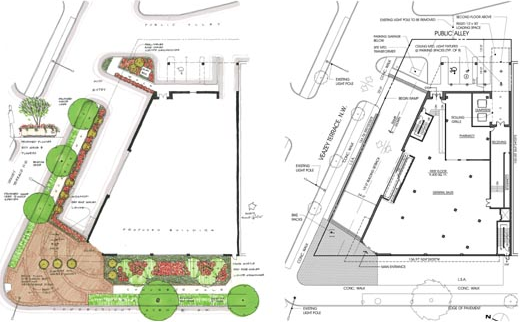This rendering, published in the 1897 edition of Moderne Architektur is strikingly dense for what was, at the time, considered the uncultured work of an engineer. Wagner and his studio produced incredible draftsmanship, but this rendering stands out because of its sheer uncanniness. Look at the two columns. One is stone, safe and solid. The other is cast iron, modern and delicate. A woman works, men turn their backs, and a locomotive of the Weiner Stadtbahn lurks. There are superhuman things and unseen layers to cities, a fact to be made beautiful.
After the break are two more under-appreciated projects of his, one for an asymmetrical bridge over a lock, and the other is the earliest architectural photomontage I am aware of, from 1906.


